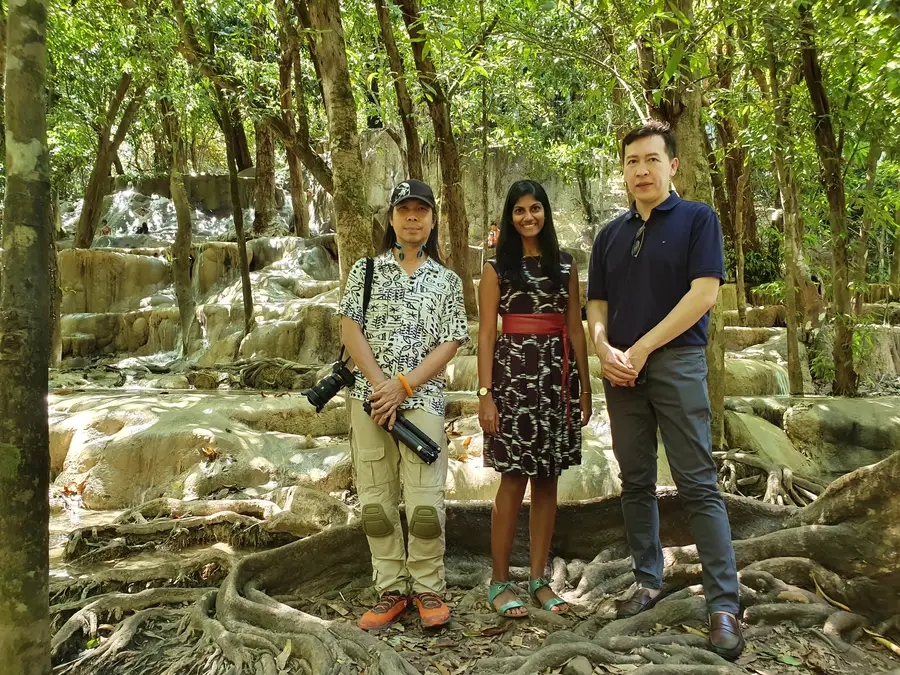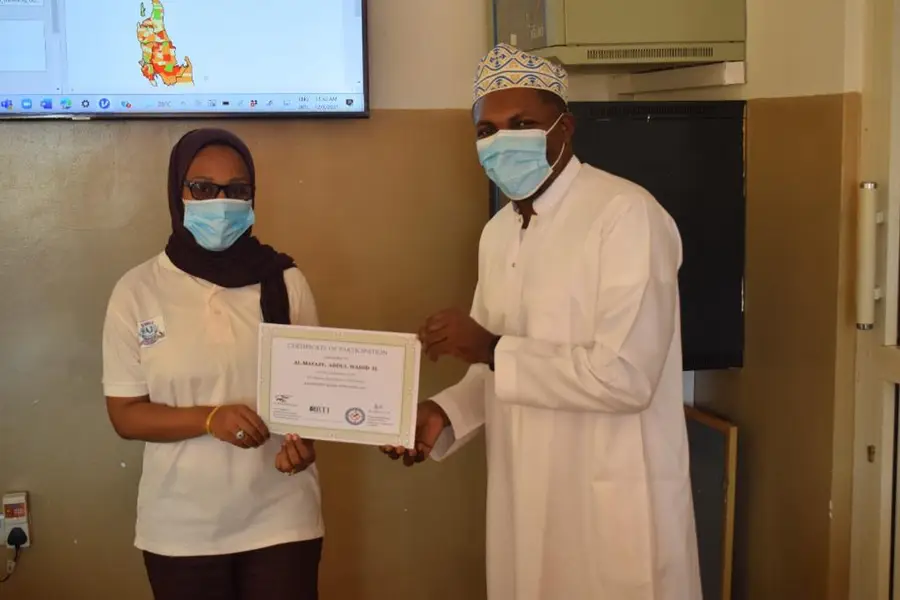Having the people, procedures, and tools in place to be able to track, investigate, and quickly respond to malaria cases can make or break a country’s ability to achieve malaria elimination. As countries move toward elimination and cases decrease, systems must be able to adapt to report individual case data in specific geographic areas in near real time.
Many countries can also face obstacles including insufficient digital infrastructure, increased costs of maintaining a health management information and surveillance system, limited financial and human resources, population mobility, and waning effectiveness of medicines used to treat malaria that can make an effective malaria surveillance response increasingly complex.
With funding from the U.S. President’s Malaria Initiative, we are working alongside the governments of both Thailand and Tanzania to strengthen their surveillance systems and reach their elimination goals by promoting integration and local ownership of data systems.
We sat down with Jui Shah, Chief of Party for the USAID Inform Asia program in Thailand, and Abdul Al Mafazy, Senior Technical Advisor for the USAID Okoa Maisha Dhibiti Malaria (OMDM)—Save Lives, End Malaria project in Tanzania to learn more about successes, challenges, trends, and learnings in malaria surveillance.
Q: Can you describe where your respective countries are in their malaria journeys?
Jui: Thailand is on track to reach its goal of zero local malaria cases by 2024. Last fiscal year, there were just 2,893 cases, down from more than 24,000 cases in 2015. There has been quite a dramatic reduction over time and the proportion of Plasmodium falciparum (Pf) malaria, the deadliest type of malaria, has also dramatically reduced to just 55 cases last year. Nowadays we are focused on Pf malaria elimination, and Thailand is leading the way toward the Mekong region’s goal of zero local Pf cases by 2023.
Abdul: Through USAID OMDM, we partner with two different ministries of health—one on mainland Tanzania and one in Zanzibar, a semi-autonomous archipelago that is part of Tanzania. Zanzibar has reached and maintained malaria levels of less than one percent prevalence since 2008 thanks to a combination of vector control interventions, effective case management, and case-based surveillance. Zanzibar currently has around 6,000 cases, with 2,500 local cases and the remainder associated with travel to the mainland. To reach elimination, we are focused on strengthening the malaria surveillance system to better understand where the transmission hotspots are and how to target the right interventions to these hotspots. As for mainland Tanzania, malaria is still in the control phase, with more than 4.6 million cases. The national goal is to reduce the malaria prevalence in children under five years from 7.5% in 2017 to 3.5% by 2025.
Q: What are the key elements of the malaria surveillance system in your country?
Jui: Malaria Online, Thailand’s main malaria surveillance database, was developed in 2012 to facilitate case-based malaria reporting both offline and online. Under the 1-3-7 strategy, which is a key component of Thailand’s surveillance system, cases are reported within 1 day, investigated within 3 days, and responded to within 7 days. This approach helps ensure that every single malaria case triggers a timely and coordinated response to prevent further spread in communities. Malaria Online also stores data from the integrated drug efficacy surveillance program, which incorporates drug resistance monitoring as part of routine malaria surveillance and response. Thailand is the first country in the Greater Mekong Subregion to pilot and implement this approach. These data allow us to both make sure that every single malaria patient throughout Thailand is getting cured, and track expansion of drug-resistant parasites to ensure that treatments remain effective.
Abdul: The malaria surveillance infrastructure in mainland Tanzania and Zanzibar differs from that of Thailand because both Ministries of Health use the district health information software 2 (DHIS2)-based health management information system for all public health data collection at the national level, which is considered the government standard. However, DHIS2 is not specific to malaria reporting and only reports aggregate monthly malaria data, which limits our ability to respond in a timely manner to outbreaks in communities.
Therefore, in 2008, we supported Zanzibar to create the Malaria Early Epidemic Detection System (MEEDS) to capture new case notifications and weekly summaries of malaria cases at the facility level using mobile phones. Then in 2012, RTI worked with the Zanzibar Malaria Elimination Program (ZAMEP) to develop a complementary case investigation application called Coconut Surveillance. So, we essentially have three separate systems all tracking malaria surveillance data and performing different important functions—DHIS2 at the national and district level, MEEDS at the facility level, and Coconut at the community and household level. Now, through the USAID OMDM program, we are working alongside ZAMEP to streamline the data from these parallel systems into one integrated system that is ultimately owned and managed by the Ministry of Health of Zanzibar. In mainland Tanzania, case-based malaria surveillance has only been introduced in three regions so far since it is still in the control phase.
Jui (center) and colleagues from USAID Inform Asia visit Thailand’s Satun province, which was verified as malaria free on World Malaria Day 2020. A malaria free status is granted to provinces after reviewing surveillance data to affirm there have been three years without local transmission.
Q: What do you think has contributed to the success of your country’s malaria surveillance system?
Jui: Thailand has benefited from leadership that values data, and when the control program transitioned to an elimination program in 2017, surveillance was the main focus. Like Zanzibar, there is high population mobility in Thailand and cases have been clustered in widespread and outlying areas, so there has been a lot of decentralization and autonomy given to local levels. Health officers in local communities oversee their own budgets since they are the ones that best understand the malaria patterns in their communities. There are also supportive policies in place at the national level on digital health and infectious disease reporting, and this is helpful with maintaining a homegrown malaria database like Malaria Online. Additionally, Inform Asia has supported the installation of new features in Malaria Online, such as integrated malaria data from the general health information system, modules for drug efficacy and lab data, and dashboards oriented toward action. Most importantly, we work alongside national and sub-national officers every day to support their confidence in interpreting data to guide their work.
Abdul: As Zanzibar transitioned from a high to low burden of malaria, a combination of efforts helped move us forward, including political will. MEEDS was launched by the previous Secretary of the Ministry of Health in 2008, so the whole time the government has been engaged and understood the importance of surveillance in moving toward elimination.
I think our focus on training and providing tools to dedicated malaria staff in districts has also contributed to local commitment and success. We organize feedback meetings with district malaria officers to ensure quality follow-ups with patients, which helps build the commitment of health workers to collect accurate data and reach people with treatment in a timely manner. The simplicity of the phone-based technology that we use for case-based notification is also important because it works offline and is easy for malaria officers to use.
Finally, we have seen a lot of success with getting both public and private health facilities to report their data in the system. It can be a challenge for countries to get private facilities to report their malaria data because they don’t answer to the government in the same way that public facilities do. In Zanzibar, we have managed to get all facilities registered and reporting their malaria data. This has become necessary, because without it we can’t have a complete picture of the malaria burden and how to respond comprehensively.
Q: What needs to happen before malaria can be eliminated in your country? What are the biggest challenges in reaching malaria elimination?
Jui: As countries approach malaria elimination and cases decrease, there is often a shrinking of finances, staff availability, and public interest in malaria. However, to get the job done, programmatic resource needs are increasing, because a low burden setting requires more nuanced analysis to understand how to get to zero malaria. We are currently focused on prevention of malaria reintroduction to ensure that provinces that have reached zero malaria maintain that status. There has also been a proportional increase of Plasmodium vivax (Pv) cases as we approach Pf elimination, which presents a challenge because the Pv parasite can live dormant in the human body and cause relapses multiple times throughout someone’s life. So, there are going to be people out there who have the parasite but aren’t symptomatic—how do you make sure this doesn’t lead to reemergence of local transmission? We also have the challenge of waning effectiveness of existing medicines as parasites develop resistance, and population mobility, which could affect malaria hotspots along the border as people migrate between countries.
Abdul: I think it’s important to continue to mobilize human resources and technology to reach elimination. Promoting adherence to surveillance protocols is also critical to make sure we are collecting quality data. We also need to continue to sensitize the community so that they understand the importance of what we’re doing. For example, when someone is tested at a facility, a health worker lets them know someone will come to their house and test other household members to ensure there isn’t community transmission of malaria. However, if they don’t trust the health worker, they may give a false phone number and follow-up may be difficult. We will also need to focus on preventing the chances of reintroduction of malaria, much like Jui mentioned. The number of cases with a history of travel is high in Zanzibar, so we need to be monitoring mobile populations to ensure we are reaching them with appropriate interventions.
The main challenge we face is the large investment required to ensure surveillance is used to guide elimination efforts. It is important for the government to be in the driver’s seat both financially and technically so that robust surveillance can be locally led. Through OMDM, we are building the capacity of ZAMEP and Ministry of Health staff to interpret their malaria data in new ways and to be able to manage and update the Coconut technology on their own. This can be challenging as it is a very specific skillset but building this capacity will be critical in ensuring sustainability and local ownership of the surveillance system moving forward.
Abdul (pictured right) poses with the Zanzibar Malaria Elimination Program (ZAMEP) Deputy Program Manager after facilitating a training for ZAMEP staff on malaria stratification.
Q: What opportunities do you think exist for learning across regions?
Jui: I think Thailand’s drug efficacy program could be relevant for mainland Tanzania and Zanzibar considering the recent emerging drug resistance in East Africa. As the malaria burden continues to drop, there might be opportunities to pilot a system like Thailand’s. Malaria is a regional challenge in the Mekong area and most cases are along international borders, so there are probably lessons that Thailand and Tanzania can learn from each other regarding migration and imported malaria cases. If someone with malaria crosses the border, there isn’t a systematic way to notify the source site if it’s on the other side of the border.
Right now, Inform Asia is adopting an epidemiological stratification approach that was used in Zanzibar to prevent reintroduction of malaria. Stratification is essentially a sorting process where we organize different geographic areas into subgroups according to level of risk so we can tailor specific interventions to different areas based on needs. This ultimately helps us make the best use of resources. For example, if everyone is sleeping inside under a bed net at night but the mosquitos are biting during the day, it doesn’t matter if everyone sleeps under a net because the intervention won’t be addressing the local context. Results like this can be disheartening, which is why surveillance is so critically important to make sure we are using the right interventions to end malaria, and not a one size fits all approach.
Abdul: I think there are many examples throughout the world that we can learn from. For instance, the World Health Organization (WHO) provides guidance for countries depending on what control or elimination stage they are in, and there are more and more global examples to draw from. The world is becoming smaller. Going forward, we are considering automating the Coconut platform to randomly choose people to follow up with to monitor the effectiveness of medicines in Zanzibar and will likely have a lot to learn from Thailand’s drug efficacy program.
Learn more about RTI’s work in malaria prevention, control, and elimination





